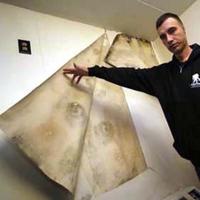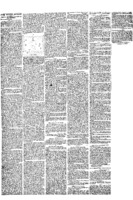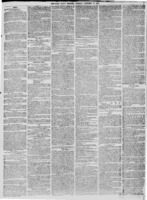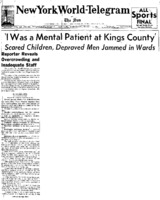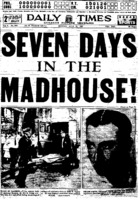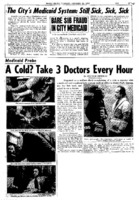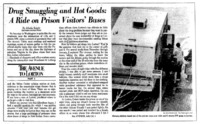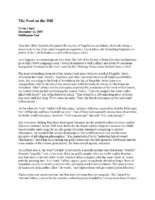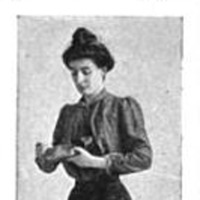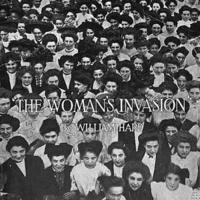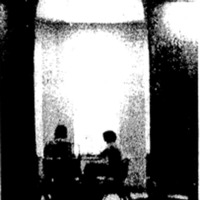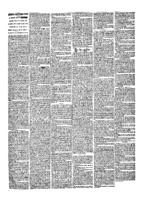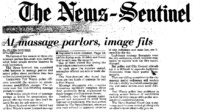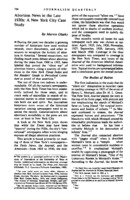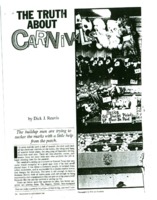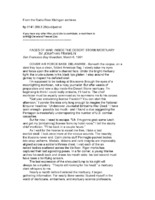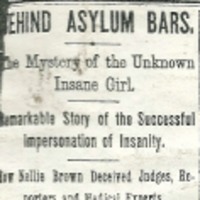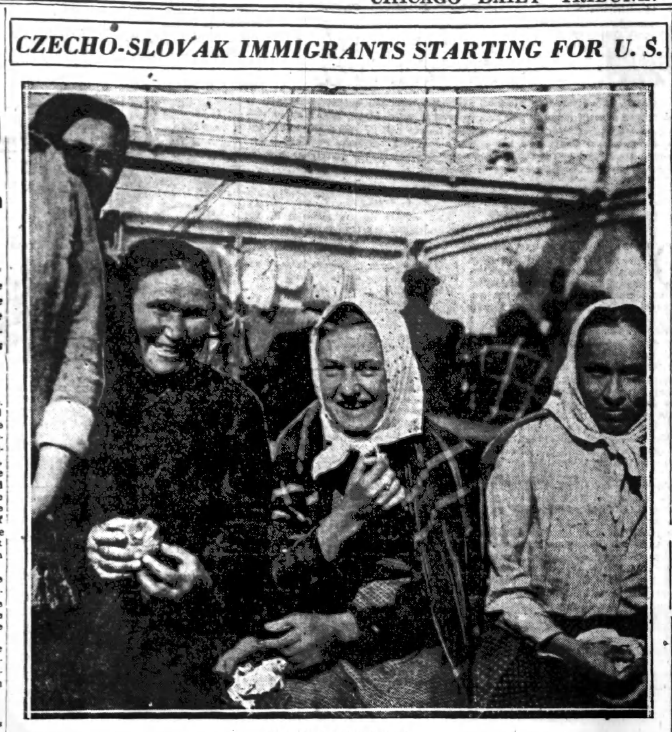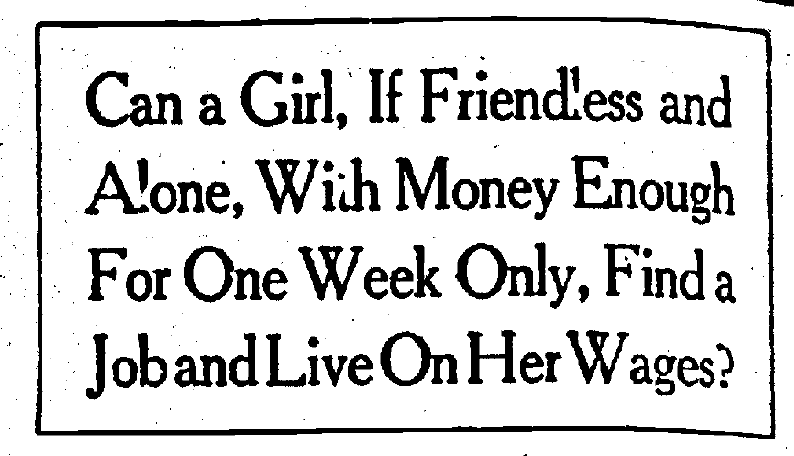Browse Reports
Subject is exactly
posed as
"The Other Walter Reed" - Dana Priest and Anne Hull - Washington Post
The original Pulitzer-Prize-winning series by Washington Post reporters Anne Hull and Dana Priest about the poor conditions at Walter Reed Army Medical Center.
"American Civilization Illustrated" - Mortimer Thomson, (Q.K. Philander Doesticks, P.B.) - New York Tribune
The popular humorist often used the undercover ruse in his work for The New York Tribune. In this instance, he posed as a client to visit a number of New York's purveyors of the "black arts" to expose their scams. The series preceded his pose as a slave buyer to cover the Butler auction in Savannah.
John Brown's Hanging - Henry S. Olcott - New York Tribune
Olcott volunteered to cover the hanging of John Brown for the New York Tribune when the newspaper's regular correspondent had to flee under threat of Southern ire at his dispatches. He posed as a member of the Petersburg Grays, one of the regiments sent to Charles Town to guard Brown's body.
"Facts of Slavery" - James Redpath - New York Tribune
Redpath inaugurated a "Facts of Slavery" column for the New York Tribune, curating slave sale information from the Southern press, and later went South to interview slaves so they could have a forum for relating their experiences in their own words. He later took jobs at Southern newspapers and surreptitiously sent reports back north in the guise of letters to relatives in Minnesota. They, in turn, under prior arrangement, forwarded the reports to editors.
"The Witches of New York" - Mortimer Thomson (Q.K. Philander Doesticks, P.B) - New York Tribune
The popular humorist and New York Tribune columnist used the undercover ruse often in his newspaper work. In this instance, he visited a number of New York purveyors of "the black arts" and exposed their cons.
Jail Time Undercover
Reporters have worked as guards or gotten themselves arrested -- sometimes with the aid of authorities and sometimes without -- to investigate conditions inside prisons and jails.
"Doing Time" - Richard H. Stewart - Boston Globe
Boston Globe reporter Richard H. Stewart spent six days in a Salem jail on a staged drunk driving conviction and wrote about his stay in a five-part-series called "Doing Time." In it, he describes everything from the conditions pf the facilities, the feeling of being confined to a cell for 13 hours a day and even the revealing and often emotional group alcohol counselling sessions he was required to attend as part of his sentence. The series ran almost as a cautionary tale during the week between Christmas and New Year's Eve.
"Behind Prison Bars" - Tim Findley & Charles Howe - San Francisco Chronicle
San Francisco Chronicle prisons investigation involving undercover as a prisoner by Tim Findley and as a guard by Charles Howe.
"The Convicted" - R.H. Ring's and John S. Long - Arizona Daily Star
Arizona Daily Star reporter R.H. Ring spent 10 days posing as a maximum-security convict at Arizona's Florence State Penitentiary. Very few people in the prison system knew of his stay, not even Florence's warden.
"I Was a Mental Patient" - Michael Mok - New York World-Telegram & Sun
One of a number of high-impact undercover investigations undertaken by the New York World Telegram & Sun in the 1960s, including Woody Klein's worst tenement series, Dale Wright's migrant workers series, and George N. Allen's Undercover Teacher. Mok's series won the prestigious Albert Lasker Medical Journalism Award and the Heywood Broun Memorial Award.
Hospitals and Clinics Undercover
Journalists have devised any number of ruses to get inside hospitals and clinics -- as patients or staff members.
"Seven Days in the Madhouse!" - Frank Smith - Chicago Daily Times
Frank Smith's series, under the editorship of Louis Ruppel at the Chicago Daily Times, got national attention and was, according to Time, a real circulation-builder for the newspaper.
"My Life With the Klan" - Jerry Thompson - Nashville Tennessean
Thompson's assignment was to create a new identity for himself, join "the new Klan," and spend a few months observing it from the inside. (In the newsroom, the cover story was that Thompson had gone into rehab.) That time undercover stretched into a year and a half. His work complemented a major series on the new Klan. As his editor, John Seigenthaler, wrote in the preface to the book that followed: "To get behind their pious platitudes and expose what they really stood for, it was necessary for Thompson to misrepresent who he was. Had there been any other way to expose the Klan, Thompson's underground role would not have been necessary."
Medicaid Probe - William Sherman - New York Daily News
A Pulitzer Prize winning series on medicaid fraud in New York.
"The Abortion Profiteers" - Pamela Zekman, Pamela Warrick - Chicago Sun-Times
A five-month investigation, led by Pamela Zekman, into the Michigan Avenue "abortion profiteers," and their dangerous and unsavory, unsanitary practices, including performing the procedure regularly on women who were not pregnant.
"Undercover Student" - Leslie Linthicum - Albuquerque Tribune
As a companion series to the paper's undercover teacher series, Leslie Linthicum, a twenty-four year-old reporter, posed as a high school student to examine the role of cliques, drugs, bureaucracy and other hidden everyday realities of a local high school."classmates."
Von Solbrig Hospital - Task Force - Chicago Tribune
After hearing from a source that janitors, without washing, were sometimes used to move patients from surgery rooms to their beds, a reporter poses as a janitor at Von Solbrig Hospital. The series, a Task Force investigation, also examines the institution's encouragement of unnecessary procedures for welfare patients.
Private Ambulance Firms Exposé - Task Force - Chicago Tribune
A six-part series with extensive follow-up reports and investigations into Chicago's private ambulance companies. The firms named in this series all transported welfare and elderly patients, many profiting through the system.
"The Avenue to Lorton" - Athelia Knight - Washington Post
Althelia Knight visited Lorton Reformatory repeatedly to document the ease with which drugs were smuggled into the institution. The trip, about 1/2 hour, was usually undertaken in a van run by a private driver, usually operating without a permit.
ACORN Investigation - James O'Keefe, Hannah Giles - Project Veritas
James O'Keefe and Hannah Giles posed as a pimp and a prostitute for an undercover camera investigation. Some low-level employees of the organization provided earnest answers to the pair's questions about avoiding detection and tax evasion, among other things. Fox News and Andrew Breitbart's Biggovernment.com (which was launched with these videos) helped to push the story beyond conservative media outlets and draw attention to the pair's findings. As a result, and after considerable media attention, ACORN was defunded by Congress.
Young Conservatives Investigate
The work of groups such as James O'Keefe's Project Veritas and Lila Rose's LiveAction and their undercover operations.
NPR Sting - James O'Keefe - Project Veritas
O'Keefe secretly recorded a conversation between NPR's Ron Schiller and two of O'Keefe's partners, posing as representatives of the "Muslim Education Action Center." The video, which was later revealed to be heavily edited, contained a number of instances of Schiller allegedly calling the Tea Party racist and Islamophobic.
Planned Parenthood Sting - Lila Rose and James O'Keefe
Lila Rose, with the help of James O'Keefe, has targeted Planned Parenthood for undercover video investigations multiple times, alleging that her work proves the organization's support of black genocide, tolerance of the sex slave trade, and other criminal and civil offenses.
"Their Men in Washington" - Ken Silverstein - Harper's
In 2007, Ken Silverstein posed as a representative of a firm with stakes in improving the public image of Turkmenistan, and its dictatorial regime. Under this guise, with considerable deception, he met with D.C. lobbying firms who vied for his business. The results were a story that revealed a thread of depravity in everyday D.C. business.
"The Maiden Tribute of Modern Babylon" - W. T. Stead - Pall Mall Gazette
W.T. Stead's sensational undercover series on "white slavery," child prostitution in and exported from London, featured the work of two women posing undercover as prostitutes and the purchase, by Stead himself, of a 13-year-old girl.
"I Was a Negro in the South for 30 Days" - Ray Sprigle - Pittsburgh Post-Gazette
Ray Sprigle, a white reporter from Pittsburgh, goes undercover as a light-skinned black man in the deep south.
"To Catch A Predator" - Chris Hansen - NBC Dateline
Dateline NBC ran a controversial, popular series of hidden camera stings across the country exposing (and, eventually, facilitating the arrest of) adult men who solicit sex with minors online. NBC paid an advocate group called Perverted Justice to set up "decoy" meetings with men who initiated sexual conversations with people posing as underage girls and boys. The men would show up at a house filled with NBC cameras, host Chris Hansen, and, as the series progressed, decoy actresses and police waiting outside. Hansen would confront the man with the transcripts of chat conversations leading up to the meeting. Once the police began to collaborate with the Perverted Justice stings, the men would walk outside only to be immediately arrested.
Home-Grown Nazis- John C. Metcalfe and James J. Metcalfe - Chicago Daily Times
The Times published two simultaneous reports of time spent undercover with US Nazi groups in 1937, before World War II. The reporters, brothers John C. and James J. Metcalfe, gained the trust of their "leaders," gaining information deliberately kept out of the public sphere by the group. The reports are accompanied by stories about events in Germany, nazi action in the US, and results of the Times reports themselves. Everything's published here in the original page layout, with multiple stories per entry.
John Roy Carlson's "Undercover with Our Fascist Enemies Within"
John Ray Carlson is the pen name for Avedis Boghos Derounian. His book, "Under Cover," and the American Mercury article "Our Fascist Enemies Within" were based on extensive research, a lot of it under cover, with a number of nazi sympathetic groups in the U.S.
Crusaders and Zealots: Undercover Among Clandestine Groups
A collection of undercover reportages focused on ideological and religious groups generally hidden from the public eye.
"Sweatshop" - Merle Linda Wolin - Los Angeles Herald-Examiner
Merle Linda Wolin, then the Los Angeles Herald-Examiner's first and only reporter covering Los Angeles's Hispanic community, went undercover as an undocumented sweatshop worker from Portuguese-speaking Brazil, under the name Merlina de Novais. Over five weeks, she worked three different jobs, even though she had minimal sewing skills. She spent the better part of a year reporting the story, including the court proceedings over a suit she brought against one of the employers who refused to pay her.
Ted Conover's "Rolling Nowhere"
Conover spent four months living as a tramp, riding the rails, which ultimately became his first book, Rolling Nowhere. Research for the project began for his senior thesis, while still an undergrad at Amherst College, which has awarded him an honorary degree.
Tim LaHaye, George Bush, and the Religious Right: Craig Unger's undercover assignment for Vanity Fair
Unger, undercover on a tour group led by Tim LaHaye (co-author, the Left Behind series), travels the Holy Land with some of LaHaye's followers. His reporting examines the connections George W. Bush, then in office, had to Religious Right leaders, and their influence on policy. The pieces also look at the everyday experience of believers - because Unger did not reveal that he was a reporter on assignment (though he did say he was a writer from New York), he was, he believes, spoken too more freely than he would have been with full disclosure.
"I Was Part of the Bronx Slave Market" - Marvel Cooke - New York Compass
In January 1950, Marvel Cooke, the first black and only woman reporter on the staff of The New York Compass, did a reprise of a series she had done for The Crisis in 1935 with Ella Baker -- the first time this method of employing women emerged. Cooke, alone this time, posed as a domestic worker seeking employment by the hour or for a day on a Bronx street corner, where women gathered to find some kind of employment to find out what working through the "slave mart" system meant for those forced into it.
"9 to Nowhere" - Tony Horwitz - Wall Street Journal
As part of an extensive Wall Street Journal report on dead-end jobs, Tony Horwitz posed as a worker in two poultry processing plants, in many ways the epitome of the "often-unseen harshness of low-wage work." The other two pieces in the Journal series, both available on the Pulitzer Prize site, do not involve undercover poses. Horwitz, however, has used the technique in previous efforts, both to investigate what was happening in the massage parlors of Fort Wayne, as a cub reporter in Indiana, here included, and to get around military restrictions during the Gulf War. He also has dressed to fit in while cultivating sources as he reported on Confederate re-enactment for his later books).
"A Bunny's Tale" - Gloria Steinem - Show Magazine
Gloria Steinem's two-part series chronicling the eleven days she spent undercover as a Bunny in Hugh Hefner's New York Playboy Club in 1963.
"Working with the Working Woman" - Cornelia Stratton Parker - Harper's
Cornelia Stratton Parker engaged with low-wage earning women in six different jobs so she could "see the world through their eyes" and for the time being, close her own. Her six-part series appeared in Harper's Magazine between June and December of 1921 and as a book, published by Harper Brothers, the following year.
Anas Aremeyaw Anas: Ghana Undercover
Anas Aremeyaw Anas is Ghana's most globally recognized investigative reporter. His work, often in disguise, focuses on exposing corruption.
"The Woman Who Toils" - Bessie and Marie van Vorst - Everybody's
The sisters-in-law van Vorst made the circuit as ostensible factory girls from the pickle factories of Pittsburgh to the shoe factories of Lynn, Massachuetts and on to the cotton mills of North Carolina. Originally published in a series in Everybody's Magazine in 1902, it became a book, published by Doubleday, the following year. Their starting point was an unapologetic sense of superiority over the wage earners they spent months impersonating, living and working among. Reviewers were quick to point to this approach as both a plus and a minus. As for revelations, they reported on the surprising number of young women whose only reason for working in the factories was near folly -- to earn pocket money for clothes and leisure -- and how that had depressed wages and opportunity for women who needed the jobs to support themselves or their families.
"The Woman's Invasion - Rheta Childe Dorr, William Hard - Everybody's Magazine
Dorr spent the better part of 1906 and 1907 under contract to Everybody's Magazine to witness and experience the feminization of the trades. She went undercover to work in the accounts division of a department store and as a commercial laundress and then in a number of factories across the country, including manufacturers of shirts, cakes and biscuits, and spun yarn. She struggled with writing for publication and was assigned a collaborator who overtook her command of the project. When the magazine advertised his byline alone for an upcoming series heralded as "The Woman's Invasion," Dorr threatened legal action and her byline was restored. "In the truest sense," she later said, "the articles were not mine."
"The Abandoned Generation" - Nat Caldwell - Nashville Tennessean
For the Nashville Tennessean in 1968, Nat Caldwell investigated Nashville's privately owned nursing homes in part by reporting above board and in part by posing as an elderly patient to spend a week at three of them.
Nellie Bly and Other Stunt Girls (and Boys) of the Late 1880s-Early 1900s
Bly was one of the most visible and attention-getting exponents of undercover reporting -- "stunt" or "detective" reporting, as this precursor of full-scale investigative work was known in her day -- though by no means the first or the only.
"Where Can a Girl Alone in New York Find Assistance?" - Emmeline Pendennis - New York Evening World
Emmeline Pendennis, under the editorship of Charles Chapin at the New York Evening World, presented herself as Helen King, a young woman who had lost her bags and purse, to produce a series that explored what someone without means in New York City could do to get help.
"City Slave Girls" - Nell Nelson - Chicago Times [aka "White Slave Girls" - New York World]
Charles Chapin, editor of The Chicago Times, hired Nell Cusak to investigate female working conditions in Chicago's factories. This 21-part series (published under the byline Nell Nelson) was based on the author's experience working undercover in several Chicago factories. Nelson named specific factories and managers she encountered, detailing the working conditions after spending only a brief time in each factory.
Central State Psychiatric Hospital Exposé - Frank Sutherland - Nashville Tennessean
Frank Sutherland spends a month at Central State Psychiatric Hospital in Nashville, exposing its inadequate condition. The newspaper first determined there was an empty bed before having him admitted, so as not to take up a needed place, and Sutherland left without notice, but the newspaper alerted authorities on his departure, so no police time would be spent searching for him.
Journalistic Acts of Race, Class, Ethnic and Gender Impersonation
Journalism that required costuming or even physical transformation by reporters reporting on racial, ethnic, gender or social groups not their own.
Homelessness, Down-and-Out, Broke
Among the most common of poses: journalists who elect to live as tramps, the homeless, or the abject poor.
Antebellum Undercover
Redpath, Olcott, Richardson and Thomson all went South for the New York Tribune and produced reporting undercover in the run-up to the Civil War.
Experiments in Misery and Luxury - Stephen Crane - New York Press
Stephen Crane's "experiments" in luxury and misery for the New York Press. The poet John Berryman later described Crane's "misery" piece as one of his very finest.
"Dirty Work" - George Getschow - Wall Street Journal
Getschow lived and worked as an oil industry day laborer to expose conditions in the temporary "slave labor camps" throughout the Southwest.
Other People's Work
Reporters encounter or inhabit the lives of very hard-laboring others.
Working with Migrants; Shadowing the Undocumented
Reporters have worked as migrant laborers and shadowed undocumented workers crossing the border into the United States.
Watchdogs in the Public Interest
Waste, fraud, graft, laxity, dilapidated conditions, corruption: Reporters have often used undercover tactics to investigate.
Infiltrating the Far Extremes
Journalists who infiltrated U.S.-based Nazi bunds, the Ku Klux Klan, the Gomorrah, and other secret societies and closed groups.
Education Undercover
Reporters have presented as teachers or students to get an inside view of what goes on in schools and colleges.
Undercover Along the Food Chain
Reporters have taken the undercover route from slaughterhouses and chicken- and pork-processing plants to fast-food chains and supermarkets to understand the system.
Ted Conover
Ted Conover's work revolves around immersion forays into a variety of subject areas, including America's hoboes, illegal immigration, prisons, Aspen, Colorado, and on the world's iconic roads.
"Food Lion" - Diane Sawyer - ABC/Prime Time Live
The broad outlines of what happened are well known: To verify reports from seventy different sources of unsanitary practices at Food Lion supermarkets, producers for the ABC newsmagazine Prime Time Live took jobs as supermarket workers and went to work with tiny concealed cameras turned on. The resulting broadcast aired November 5, 1992, replete with gross but powerful footage of employees in such questionable acts as redating expired meats and poultry, trimming pork with spoiled edges to repackage for longer sale, marinating chicken in water and liquid that hadn’t been changed for days, and slicing slimy turkey and coating it in barbecue sauce to resell as a gourmet special.
Deep Encounters with Religious Groups
In efforts to get inside the fold, reporters have fellow-traveled with religious groups, posing as members or prospective recruits.
Unique Exploits of Women Writers - New York World - March 16, 1890
The New York World featured four women writers in their Sunday, March 16, 1980 paper.
"Maid for a Month" - Jan Wong - Toronto Globe and Mail
Journalist Jan Wong changed her life for a month to see what it would be like to live with a minimum wage income. She left her husband for a month posing as a single mother and maid with two children living in a rented basement apartment.
Nellie Bly of The New York World
A gathering of the undercover and experiential reporting of Elizabeth Cochrane, later Seaman, who wrote under the pen name of Nellie Bly.
Dick J. Reavis
A collection of Dick J. Reavis' works pertaining to undercover journalism.
Nursing Homes Undercover
From 1968 to present day, reporters have gone undercover to expose the corruption and mistreatment that occurs within nursing homes.
Asylums Undercover
Since the 1870s, journalists have been posing as patients or attendants to expose horrid conditions and treatment inside mental hospitals. Nellie Bly, incidentally, was not the first.
Depression-Era Undercover
Experiencing life among the poverty-stricken and the down-and-out was a recurrent Depression-era theme, one Marvel Cooke reprised in the 1950.
U.S. Immigration and Ellis Island Series - Genevieve Forbes Herrick - Chicago Tribune
Genevieve Forbes Herrick with the Chicago Daily Tribune posed as a young Irish immigrant girl and "had some remarkable experiences in Ireland and in the steerage before she ran the gantlet of all the terrors of this great American gateway to the United States. She is disclosing what she and her fellow immigrants endured to enter this country. Miss Forbes' experiences bear out fully the charges made against Ellis Island."
Job Hunting Series - Catharine Brody
'Miss Brody, an able and experienced reporter, started out with $10 in her purse, with a frock that costs $6, and with a small handbag as her only luggage--she visited cities, with one exception, strange to her--the comedy and the tragedy, the lesson and the promise to her experiences are vividly and enlighteningly told in this series of articles'
Marvel Cooke
Marvel Cooke began her journalistic career in 1926 working with W.B. Dubois, editor of NAACP magazine, The Crisis. There, she and Ella Baker first investigated the 'Bronx Slave Market' in 1935-- a series she later reprised alone at the New York Compass as the publication's first Black and only woman reporter.
Undercover Immigration Reporting
Undercover reporting on immigration into the United States.

